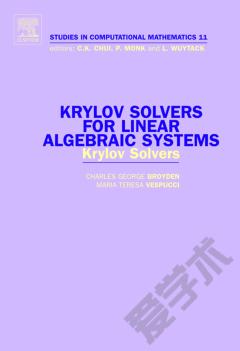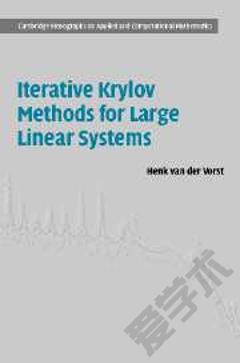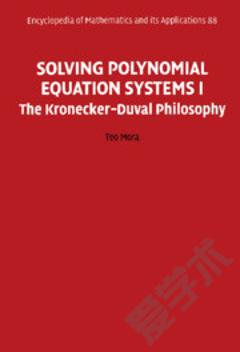Krylov Solvers for Linear Algebraic Systems —— Krylov Solvers
----- 线性代数系统的克雷洛夫算器:克雷洛夫解算器
The first four chapters of this book give a comprehensive and unified theory of the Krylov methods. Many of these are shown to be particular examples ofthe block conjugate-gradient algorithm and it is this observation thatpermits the unification of the theory. The two major sub-classes of thosemethods, the Lanczos and the Hestenes-Stiefel, are developed in parallel asnatural generalisations of the Orthodir (GCR) and Orthomin algorithms. Theseare themselves based on Arnoldi's algorithm and a generalised Gram-Schmidtalgorithm and their properties, in particular their stability properties,are determined by the two matrices that define the block conjugate-gradientalgorithm. These are the matrix of coefficients and the preconditioningmatrix.In Chapter 5 the"transpose-free" algorithms based on the conjugate-gradient squared algorithm are presented while Chapter 6 examines the various ways in which the QMR technique has been exploited. Look-ahead methods and general block methods are dealt with in Chapters 7 and 8 while Chapter 9 is devoted to error analysis of two basic algorithms.In Chapter 10 the results of numerical testing of the more important algorithms in their basic forms (i.e. without look-ahead or preconditioning) are presented and these are related to the structure of the algorithms and the general theory. Graphs illustrating the performances of various algorithm/problem combinations are given via a CD-ROM.Chapter 11, by far the longest, gives a survey of preconditioning techniques. These range from the old idea of polynomial preconditioning via SOR and ILU preconditioning to methods like SpAI, AInv and the multigrid methods that were developed specifically for use with parallel computers. Chapter 12 is devoted to dual algorithms like Orthores and the reverse algorithms of Hegedus. Finally certain ancillary matters like reduction to Hessenberg form, Chebychev polynomials and the companion matrix are described in a series of appendices.路 comprehensive and unified approach路 up-to-date chapter on preconditioners路 complete theory of stability路 includes dual and reverse methods路 comparison of algorithms on CD-ROM路 objective assessment of algorithms
{{comment.content}}








 京公网安备 11010802027623号
京公网安备 11010802027623号